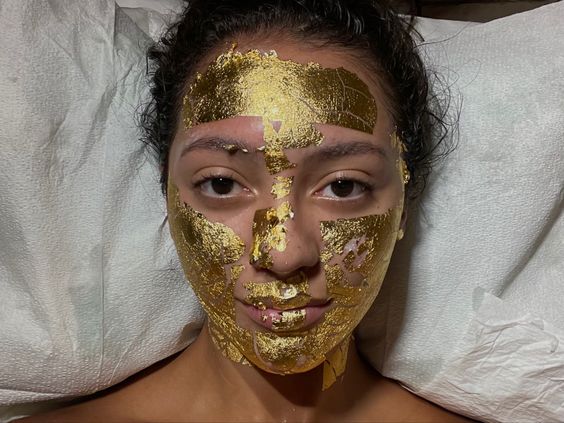
A typical situation today: A product goes viral on social networks, each new review of the product is better than the previous one, and everyone you know already has it. You have no choice but to buy. Then you start using it for a day, two, three… And you realize something is wrong. Inflammations appear on the skin that were not there before, and when the foundation is applied, the product rolls treacherously. What happened can be explained in different ways – the skin is not used to it, it was applied incorrectly, it did not have time to be absorbed at the wrong time, with the wrong serum and a million other excuses. But everything can be much simpler – the cream does not suit you. How to understand this immediately and not spoil your skin? We learned from a beautician.

Anna Smolyanova, founder of the multidisciplinary aesthetic medicine clinic Stellar Beauty Clinic, beautician, dermatovenerologist, member of the association of aesthetic medicine specialists
An allergic reaction occurs on the skin
The first and main sign that the cream is not suitable for you is that it causes a sensitivity reaction on the skin. For example, after applying the cream, redness or burning occurs, itching is felt or swelling appears. Often this may indicate an allergic reaction to one of the product’s ingredients. And here the main difficulty is to determine which ingredient causes allergies. The cause of the reaction may be cosmetic fragrances, essential oils, natural extracts, preservatives, dyes, metals (zinc, cobalt, iron, aluminum). Today there is a way to identify the allergen. There is an approved list of hapten substances (called partial allergens) used in patch testing that can be used to determine exactly what you are allergic to.
Cream is slipping

We often hear that the cream may run due to poorly cleansed skin or because the product has not dried completely. Yes, this happens, but it is not always the case.
Reason #1. The cream we apply to our face is nothing more than an emulsion that comes into contact with the sebum, or lack thereof, on our skin. As a result, if this contact does not develop, the cream is literally pushed away from the skin surface. This is due to the texture and composition not suitable for your skin type.
Reason #2. The cream may slip due to the lack of composition or chemical components. This is also directly related to your skin’s needs.
The product is unsafe to use

No matter how trivial it may sound, the cosmetics we use every day should be comfortable and enjoyable. In this case, we’re talking about little things (but actually important things) like scent, texture, and even packaging. While using the product in stick form may be convenient for one person, for another, this format will cause more trouble. One person likes bright scents, the other gets bored of the scent immediately but it lingers on the skin. While all of these factors may seem unimportant individually, when combined they are significant and can ruin the entire experience. Therefore, when choosing a product, pay attention to details such as smell, packaging and texture.
How to choose a moisturizer according to your skin type?
Any cosmetic product should always be selected according to your skin type and pay attention to the composition of ingredients that will help solve certain problems.
For problem skin It is better to look for anti-inflammatory ingredients in the cream. This may be azelaic or salicylic acid, green tea extract, zinc. Ingredients of various forms of vitamin A are also now becoming popular, both in classic encapsulated retinol and in formulations such as retinol palmitate, trans-retinoic acid.
For dry skin You need to choose products with ingredients that are part of our own hydrolipid mantle. These are phospholipids, squalene and ceramides. These ingredients should also be present in the cream. By the way, manufacturers who want to replace such ingredients often add caprylic triglyceride or coconut oil to the product formula for dry skin. They soften the skin but are definitely not suitable for it.
In the composition of the product for sensitive skin We also need the components found in our hydrolipid mantle (the same phospholipids, squalene and ceramides). However, ingredients like retinol, trans-retinoic, salicylic, azelaic and glycolic acids are best avoided because they can cause irritation. Additionally, for sensitive types, creams containing hyaluronic acid, epidermal growth factor (the name of the type of polypeptide that regulates the growth and division of epidermal cells) and urea in low concentrations up to 5% can also be used. It moisturizes and soothes well, it is suitable.
combination skin It occurs quite often, so emphasis should be placed first on what its status is at the moment. If it is prone to drying (especially in the cold season), the cream must contain the components of the lipid substance of the epidermis that we have already discussed. If one is prone to oiliness and inflammatory elements, emphasis should be placed on acidic agents that will work with inflammation. For combination skin, you can also use peptide cosmetics and products with trehalose. This long-acting ingredient optimally preserves moisture in the upper layers of the skin, without making combination skin drier or oilier.
Source: People Talk
I’m Roger Gritton, and I’ve been writing for the The Fashion Vibes for over 5 years now. My specialty is beauty news; I’m passionate about covering the latest trends, products, and innovations in the industry. In my time there, I’ve become known as an authority on all things beauty-related.
I love discovering new experts to interview, researching up-and-coming ingredients and techniques that are making their way onto our beauty shelves and highlighting people who are making a difference in the world of cosmetics. My work has appeared not only on The Fashion Vibes, but also several other publications including the New York Times Magazine, Allure Magazine and Refinery29.




